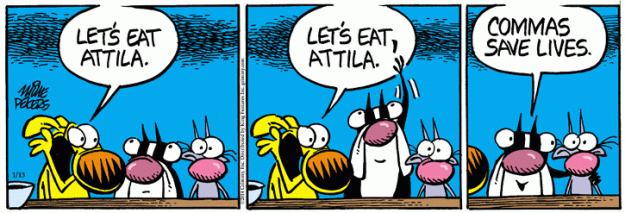In my previous post about English sentence structure, I talked about combining complete sentences with incomplete sentences.
There are actually many types of incomplete sentences. Here are the main ones:
1. Starts with a subordinator
I talked about these in my previous post.
even though I’m so hungry (incomplete)
–> Even though I’m so hungry, I don’t want to eat.
–> I don’t want to eat even though I’m so hungry.
–> I, even though I’m so hungry, don’t want to eat.
2. Transitions
Transitions are words or groups of words that are used to connect ideas. However, unlike the subordinators and “fanboys” connectors I described in my previous post, transitions don’t really “do” anything grammatically.
however
–> However, we haven’t fixed the problem yet.
–> We haven’t fixed the problem yet, however.
–> We haven’t, however, fixed the problem yet.
Here’s how you use transitions to connect ideas between two sentences:
–> We made good progress yesterday. However, we haven’t fixed the problem yet.
–> We made good progress yesterday. We haven’t fixed the problem yet, however.
–> We made good progress yesterday. We haven’t, however, fixed the problem yet.
Do not use transitions to “glue” two sentences together.
–> We made good progress yesterday, however, we haven’t fixed the problem yet. (WRONG)
3. When
after dinner
–> After dinner, I studied for five hours.
–> I studied for five hours after dinner.
–> I studied, after dinner, for five hours.
4. Where
under the bed
–> Under the bed, there was a huge spider.
–> There was a huge spider under the bed.
–> There was, under the bed, a huge spider.
5. How
Slowly but steadily
–> Slowly but steadily, he pushed the car up the hill.
–> He pushed the car up the hill, slowly but steadily.
–> He pushed the car, slowly but steadily, up the hill.
6. Why
Due to her poor grades
–> Due to her poor grades, she will not be able to enter university.
–> She will not be able to enter university due to her poor grades.
–> She will not be able, due to her poor grades, to enter university.
7. Extra information about a noun
The extra information should go right after the noun.
a city in British Columbia, Canada
–> Kelowna, a city in British Columbia, Canada, is known for its Ogopogo monster. (extra information about Kelowna)
–> A city in British Columbia, Canada, Kelowna is known for its Ogopogo monster. (This is very formal!)
–> I really like Kelowna, a city in British Columbia, Canada.
8. Extra information about a whole sentence
which isn’t good
–> I haven’t been exercising lately, which isn’t good.
Notes:
You’ll notice that I didn’t describe the grammar of most of these incomplete sentences. Instead, I focused on what they do (their function).
A lot of students hate hearing about prepositional phrases, adverb clauses, adjective clauses, noun clauses, noun phrases, etc. For many students it’s easier to just think “I should give some extra information about how, when, why, etc. by adding an incomplete sentence.”
I’m not saying it’s wrong to teach grammatical terms, but maybe it’s a good idea not to teach those terms until students are at quite a high level (and age).
Next post: Tips for recognizing incomplete sentences.


